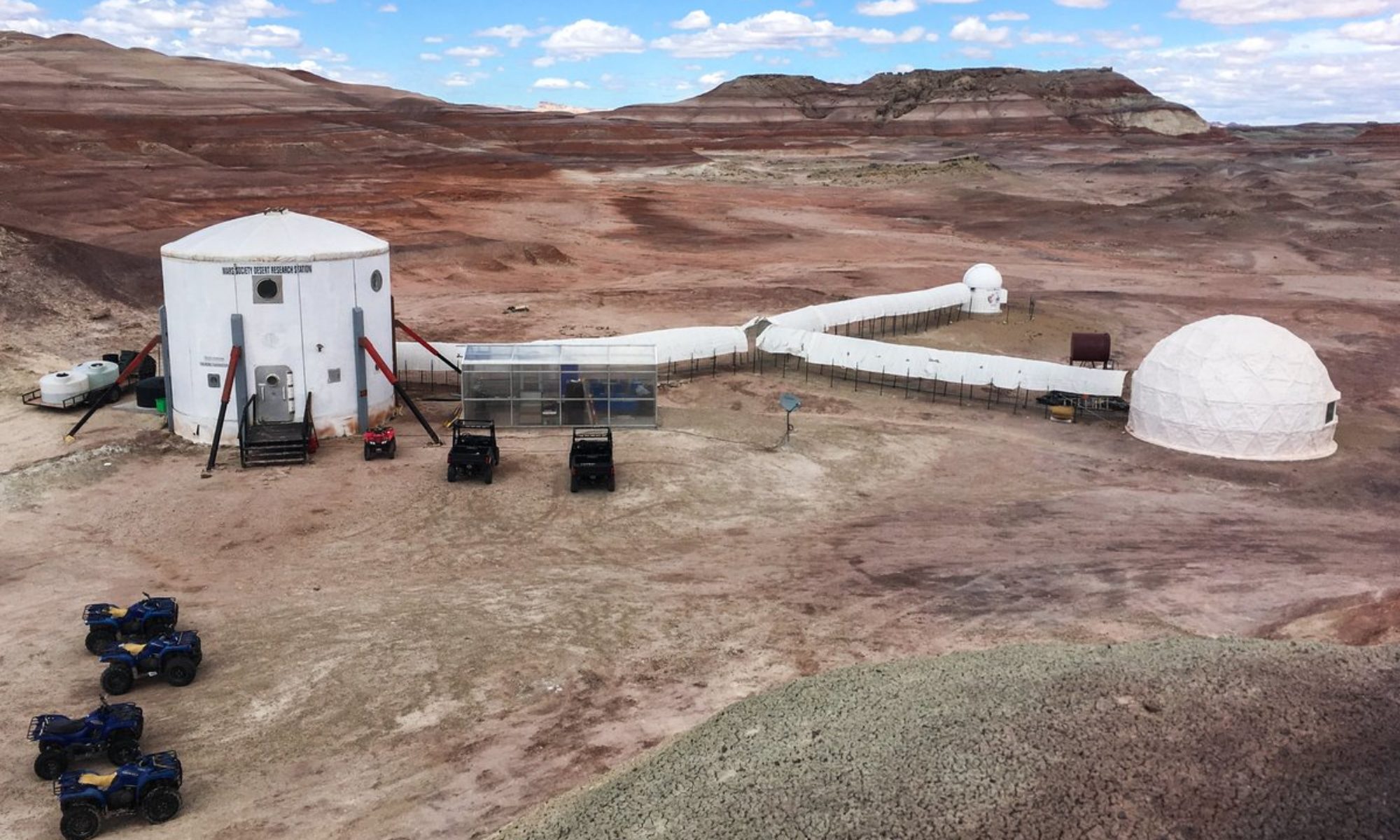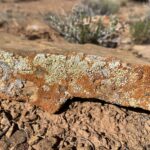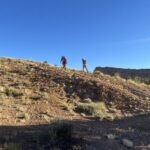By Jordan Bimm
On our final full day of fieldwork we set early out to retrieve two promising Critter Cams that Samantha McBeth had deployed earlier in the week. Both were located at sites off Factory Bench Road. The first was near the pond at Coal Mine Wash, and the other was further down the winding dirt-and-gravel road on the bank of a dry river bed at Salt Wash. Yesterday we were worried that a passing hiker might have disturbed our camera at Hog Springs, but due to the isolation and inaccessibility of these sites we were confident both would be retrievable.
Hiking down to the cavernous rock-cauldron-like pond we wondered which species, if any, would make an appearance on our memory card. According to McBeth, Critter Cams are “the most effective technique for photographing elusive and nocturnal wildlife.” But while you gain round-the-clock surveillance, you are limited by the camera’s field of vision. McBeth placed each camera strategically close to water sources, natural or artificial “funnels” in the land (like dry creek beds or culverts), or places where many recent tracks are present.
Despite working from these tried-and-true principles, nature still has to cooperate. At a certain point, scientists are subject to the agency of animals and the inscrutable choices they make. Maybe no one would decide to walk past the camera during the 72 hours it was deployed. There is always an element of chance, which makes retrieval exciting but also nerve wracking. There could be ANYTHING; there could be NOTHING.
As we arrived at the cliff which overlooked the pond these possibilities raced through our heads. We scaled down the ledge leading to pond level and McBeth made a bee-line for the camera. Checking the contents of the camera’s memory card she counted 66 files, representing 22 captures over the course of three days. She had programmed the drive to produce two photos and one 10-second long video each time motion activates the camera to document the action. This was a promising find! While McBeth made a preliminary review using the camera’s small internal screen, Jacopo Razzauti went to work catching mosquitoes with his net and aspirator, and Oliva Drayson collected a water sample from the bright green pond in one of her glass jars.
Then, our activities were suddenly interrupted by a special guest. A beautiful pronghorn, a deer-like antelope, appeared peering over the cliff above us. It clearly was a regular at the Coal Mine Wash watering hole and was back in search of a cool beverage. But with researchers interloping it chose to keep its distance keeping one suspicious and watchful eye trained in our direction. Adding to the animal action was an off-hours bat (which we identified as a western pipistrelle) that began a series of swooping dives over the pond snacking on unlucky insects. This activity we witnessed was echoed in what McBeth discovered on her Critter Cam.
Clicking through the files McBeth was instantly greeted with fieldwork gold. A black and white night vision image of a magnificent great horned owl filled her eyes. And there was more. The owl was clearly on the hunt. The image showed the owl, mid-flight with sharp talons forward trained on a frog. The second image gave the result of this aerial assault: lucky frog 1, owl 0. The 10-second video that followed showed the owl immediately following the attempt, puffed up and strutting around in the mud next to the pond, appearing to us as if it were trying to recover from the indignity of coming up short.
And that wasn’t all, McBeth also had crisp, detailed imagery of a lone red fox, an unkindness of ravens that showed up in many shots seemingly having a party by the pond’s edge, and finally a pair of horned larks that were also there enjoying sips of water. Clearly this pond was a popular and possibly an essential destination. Now we had solid data showing who was here, when, and for what reason. Walking back to the Crew Car we continued to make visual observations of critters including several types of birds: a pine gross beak, an olive-sided flycatcher, bank swallows, a rock wren, as well as some lizards including western whiptails, desert spiny lizards, and side-blotched lizards. Deserts might seem like vacant “wastes” with minimal life, but our survey documented the rich animal biodiversity and activity at the Coal Mine Wash pond.
Our next stop was 20 minutes further down Factory Bench Road to retrieve the second camera placed at Salt Wash. Here, McBeth had placed a camera near where we had spotted a desert squirrel, and where there was evidence of rodent tracks and a burrow. Reaching this site, McBeth detached the camera and quickly reviewed the contents. Zip. Nada. Zero. The only images were incidental photos of us setting up the device and arriving back to retrieve it. McBeth was crestfallen, but also aware that this is how science goes. You can set up your experiment but you cannot determine the outcome. That part is up to nature, and sometimes it goes your way, and other times it doesn’t. Your job as a scientist is to faithfully report the results and draw conclusions, even from a null set. As we drove back to the Hab, excited to review the snaps from Coal Mine Wash, we discussed our approach to using Critter Cams. McBeth was already full of ideas about how to adapt this approach for future investigations.
Arriving back at MDRS we made a plan to complete and submit our final report and began the process of cleaning the Hab for its next occupants. We were hot, we were tired, but we had accomplished our science goals, and that feeling brought us great satisfaction. Our biodiversity survey of sites around and reachable from MDRS investigating plants, insects, macroinvertebrates, and microplastics had produced solid findings we are excited to analyze and publish.




















You must be logged in to post a comment.